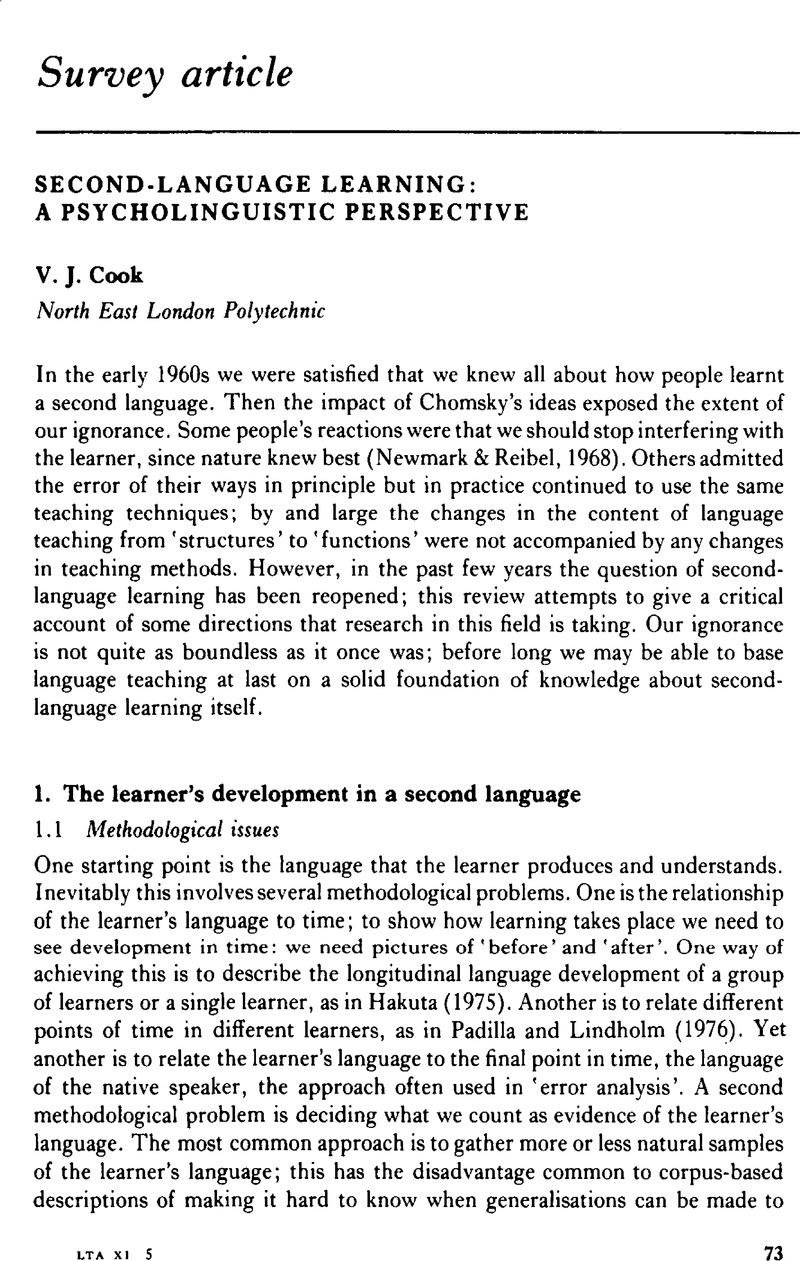Crossref Citations
This article has been cited by the following publications. This list is generated based on data provided by Crossref.
Ulijn, Jan
1980.
Foreign language reading research: recent trends and future propects.
Journal of Research in Reading,
Vol. 3,
Issue. 1,
p.
17.
Brindley, Geoff
and
Singh, Ken
1982.
The use of second language learning research in E.S.L. proficiency assessment.
Australian Review of Applied Linguistics,
Vol. 5,
Issue. 1,
p.
84.
Glisan, Eileen W.
1985.
THE EFFECT OF WORD ORDER ON LISTENING COMPREHENSION AND PATTERN RETENTION: AN EXPERIMENT IN SPANISH AS A FOREIGN LANGUAGE.
Language Learning,
Vol. 35,
Issue. 3,
p.
443.
Gardner, R. C.
and
MacIntyre, P. D.
1992.
A student's contributions to second language learning. Part I: Cognitive variables.
Language Teaching,
Vol. 25,
Issue. 4,
p.
211.
Mägiste, Edith
1992.
Second language learning in elementary and high school students.
European Journal of Cognitive Psychology,
Vol. 4,
Issue. 4,
p.
355.
Gardner, R. C.
and
MacIntyre, P. D.
1993.
A student's contributions to second-language learning. Part II: Affective variables.
Language Teaching,
Vol. 26,
Issue. 1,
p.
1.
Weideman, Albert
2017.
Responsible Design in Applied Linguistics: Theory and Practice.
Vol. 28,
Issue. ,
p.
149.
Weideman, Albert
2017.
Responsible Design in Applied Linguistics: Theory and Practice.
Vol. 28,
Issue. ,
p.
53.



